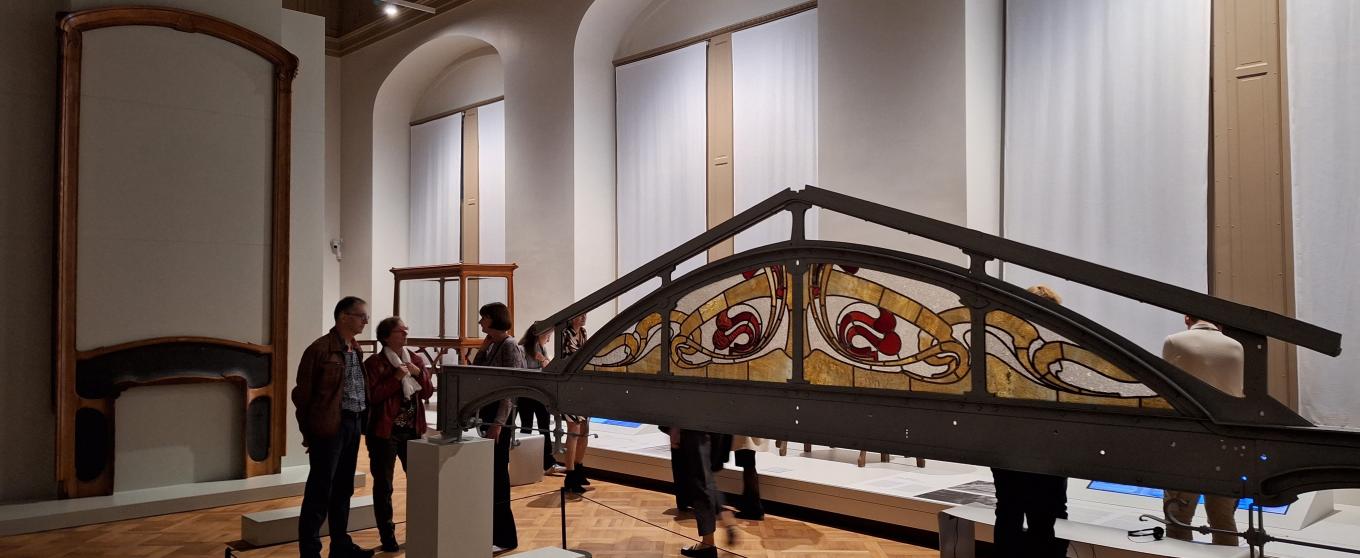
Horta's Winter Garden : Belgian Art Nouveau and Art Deco
Belgian Art Nouveau and Art Deco
The winter garden designed in 1900 by architect Victor Horta for engineer Jean Cousin, will be reassembled from May 2024 in the gallery where the Hoffmann exhibition is currently taking place. That permanent gallery, scheduled to open in late 2024, will be dedicated to Belgian Art Nouveau and Art Deco. It will later be part of a circuit in which the museum’s rich collection of decorative arts, ranging from the Middle Ages to 1940, will be displayed.
In 1894, the Art & History Museum was the first Belgian museum to start
a collection of modern decorative arts. Since then, the collection of Belgian Art Nouveau and Art Deco has grown considerably to include furniture, sculptures, silverware, ceramics, glassware and much more. Since 2017, a small part of this collection has been exhibited in the restored and relocated Wolfers store, which was designed by Victor Horta between 1909 and 1911. The rest of the collection has rarely, if ever, been on display.
As one of the key figures of Art Nouveau, Victor Horta will be given a prominent place in the gallery dedicated to Belgian Art Nouveau and Art Deco. However, he is not the only one who contributed to the international fame of this first Belgian style: around the same time, creations by other great national figures were also successful both at home and abroad. Important works by Paul Hankar, Henry van de Velde, Philippe Wolfers, William Finch, along with artworks by many more, will be part of the display that will give the public a comprehensive picture of both Art Nouveau and Art Deco in Belgium.
As Art Nouveau and Art Deco are decorative styles characterised by a high degree of sophistication, great attention was paid to the museological presentation. Bureau Pièce Montée created a sober but sophisticated scenography that will do full justice to the works of art, grouped in coherent historical ensembles.
Belgian Art Nouveau without the whiplash line
Clean lines, rational design, and geometry characterise the creationsof Austrian Josef Hoffmann and the Wiener Werkstätte from around 1901 to 1910. They are often seen as the reason for the disappearance of the whiplash line, widely considered one of the most typical features of Belgian Art Nouveau. This theory emerged, especially after the construction of the Palais Stoclet in Brussels, which was built by Josef Hoffmann between 1905 and 1911 and furnished by the Wiener Werkstätte.
This thesis is questionable and mainly results from the importance given to Victor Horta’s work in Belgian Art Nouveau. His Art Nouveau whiplash line is a distinctive feature and had its followers, but it can by no means be considered as specific to the Belgian style as a whole.
In 1897, Brussels hosted the Colonial Exhibition in Tervueren, designed by architects Paul Hankar, Henry van de Velde, Gustave Serrurier-Bovy and Georges Hobé. Their style was very different from Victor Horta’s: it was much sober, more rational and leaned towards geometry. Due to the success of the exhibition, which had a phenomenally large attendance, it was this form of Art Nouveau in particular that was emulated and became known to the general public. According to contemporary accounts, Viennese architect Otto Wagner, impressed by the design of the 1897 exhibition, turned his back on classicism and embraced modernity.
From the second half of the nineteenth century onwards, artistic expressions cannot be linked to a single element anymore. Instead, they are the result of a range of influences and various social evolutions and events. The rapid economic growth in many countries and increasing communication channels are no strangers to this. It is certainly worth underlining here the German revival that pushed forward the economic power of the decorative arts even before 1900, with larger-scale machine production favouring a sober design.